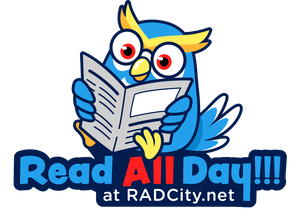Tech
Top 15 Web Development IDEs

The web development field has seen sustainable growth throughout the years. As technology is advancing, so is the web development domain, but one thing remained unchanged, which is the use of IDEs for web development. HTML and CSS code editing can be done effortlessly using text editors, but if you want to perform software writing and testing, then Integrated Development Environment (IDE) is an important aspect that will help you enhance your skills to a different level. IDEs offer features like automation, customization, and visualization to help the developers to implement new ideas and observe the live working of the websites.
Let us start our exciting journey of uncovering the treasure of the best web development IDE. On our journey, we will discover different IDEs used for web development, their features, benefits, and limitations.
What is IDE?
Integrated Development Environment is a software application that helps developers build applications by combining standard developer tools in a single GUI (Graphical User Interface). Without IDEs, developers have to manage all the tools separately, but IDE has made the web developer’s work quick and precise by bringing all the tools for web development together as a single framework. IDE generally consists of automation tools, a source code editor, and a debugger.
Best IDE for Web Development
NetBeans:
NetBeans is an open-source and free IDE that helps you to develop web, mobile, and desktop applications using HTML5 and Java platforms. It is available in multiple languages like English, Brazilian, Japanese, Portuguese, Simplified Chinese, and Russian. It includes various integrated modules like the GUI design tool, JavaScript editor, and NetBeans profiler that help you in the software development process.
It is one of the most significant web development IDE available that helps developers create a bug-free website by highlighting the source code semantically and syntactically. The developers can develop high-performing apps using modules. A strong and vibrant community of developers supports NetBeans.
Features:
- It supports Apache Maven.
- It has built-in code refactoring, an integrated debugger, and source code highlighting.
- It writes bug-free code using the FindBug tool.
- It has a flexible workspace.
- It has rich plug-in support.
- It has built-in drag-and-drop features.
Pros:
- It is easy to use as it supports the latest Java technologies.
- It supports multi-platform like macOS, Windows, Linux, and Solaris.
- It has a powerful code editor that helps in the smart development of Graphic User Interface for HTML5, C++, Java, PHP, etc.
- It has an efficient Project Management process.
- It is free to use.
- It provides unit testing templates for the apps.
Cons:
- It requires extensions for modeling.
- Handling big projects is hard.
- Developers can face occasional performance lags.
Visual Studio Code:
It is a streamlined source code editor that supports JavaScript development with the help of operations like version controls, debugging, and task running. It is one of the most popular IDE for web development developed by Microsoft that helps organizations to create a perfect development environment. It has a very powerful debugger that debugs both the machine code and the source code at the same time.
It has IntelliSense an intelligent code completion tool that provides intelligent code recommendations to the developers for finishing code quickly. Developers can enhance the functionality of written codes and repair web and cloud app coding errors using Visual Studio Code IDE.
Features:
- It simplifies and automates Azure deployments.
- It has custom hotkeys, imported modules, and customizable themes.
- It has built-in CLI (Command-line Interface) and enables Git integration.
- It has Zen mode which helps developers focus on the coding by hiding the entire UI except for the editor.
- Developers can work on two different files simultaneously using the split view feature.
- It has built-in package managers like NPM and NuGet.
Pros:
- It is free to use and supports cross-platform (Windows, Mac, and Linux) systems.
- It supports multiple programming languages.
- It has built-in support for web applications.
- It is lightweight and has a robust architecture.
- It is the primary IDE for the C# and .Net development.
Cons:
- Sometimes the system faces lag issues during the debugging process.
- It is a huge application and takes time for loading.
- It is expensive for commercial use
Atom by GitHub:
Its an open and free-source code and text editor that supports Git version control and Node.js packages. It is created by GitHub and is based on the Electron framework to help developers build cross-platform web applications. It has a flexible and intelligent autocomplete feature that helps developers write code faster.
Although it’s highly customizable, developers can use it without any customization or configurations. There are eight syntax themes and four UIs pre-installed in Atom. A rich and supportive developers community has its support.
Features:
- It is highly customizable and has a wide range of packages and extensions.
- Developers can collaborate within the editor using the Teletype tool.
- Developers can easily browse and open a whole project, multiple projects, or a single file in one window.
- It supports a command palette to run available commands.
- It has GitHub integration.
- It supports multiple languages like Python, Java, HTML, C++, etc.
Pros:
- It works across all OS like Windows, Linux, and OS X and supports cross-platform editing.
- It is free, flexible, and extensible.
- It has built-in auto-complete and recommendation features.
- It is easy to use and has an excellent user interface.
- It supports third-party themes and packages.
Cons:
- It uses loads of memory.
- It has limited functions and has slow performance.
PyCharm:
It is one of the best IDE for Python programming language that provides a wide range of developer tools for python developers. Developers can create a virtual environment, manage the version control system, and access the command line. You can develop your own plug-ins to increase functionality using the pre-installed API. It supports Linus, Windows, and Mac OS and helps you to develop back-end and cross-platform projects.
It is created by JetBrains and provides code analysis, a graphical debugger, and an integrated unit tester. Developers can facilitate web development with Flask, Django, and web2py. It has over 1000 available plug-ins.
Features:
- It supports automatic code refactoring and has error highlighting, intelligent code compilation, quick fixes, and many more features.
- It integrates with Mercurial and Git and supports packages like Matplotlib and NumPy.
- It has in-built server access functionality.
- It supports Google App Engine and has good navigation capabilities.
- It supports debugging and has integrated unit testing tools.
Pros:
- It is easily customizable and has cross-platform development capabilities.
- It is an intelligent web development IDE.
- It is free and easy to use.
- It has excellent community support.
- It facilitates faster code development and has a plethora of productive shortcuts.
Cons:
- Its paid version is expensive.
- It is hard for Python beginners.
- It requires a lot of memory and space.
- It has performance bugs and limited features in the free version.
Webstorm:
Webstorm is a user-friendly and smart JavaScript IDE that developers use to create high-performing web applications. JetBrains developed Webstorm. It has a smooth user interface with incredible functionality. Its remarkably lightweight architecture helps developers create stand-out online apps. It increases productivity by automating most of the tasks. Developers can integrate Webstorm with linters like ESLint and Stylelint. The editor has a built-in HTTP client that helps you create, edit, or run the HTTP requests.
Features:
- It has built-in unit testing tools and a debugger for client-side apps and Node.js.
- It can easily integrate with VCS and Git.
- It has intelligent code completion and automatic refactoring feature.
- Developers can use Node.js for server-side development.
- It provides live-error detection.
- It supports multiple programming languages like JavaScript, HTML, CSS, and TypeScript.
- It has a unified UI and intelligent editor.
Pros:
- It is easy to customize and supports numerous plug-ins.
- It is free to use.
- It supports multiple mobile development languages like PhoneGap, Cordova, React Native, etc.
- It supports web frameworks like Vue.js, Angular, React, etc. providing advanced coding assistance.
- It has powerful navigation and multi-line todos.
Cons:
- Its memory usage is high.
- It has a slow start-up process.
- Subscriptions can be high.
IntelliJ IDEA:
It is one of the most popular and powerful Java-centric open-source IDE for designing computer software written in JAR-based languages like Kotlin, Java, Groovy, etc. It is developed by JetBrains and helps developers maximize their productivity. It has in-built developer tools and performs data flow analysis. Developers can check the overall quality of the code using the on-the-fly inspections functionality. Developers can perform full-fledged web development using its paid version. It has the support of a vibrant community of developers.
Features:
- It has integrated version control and intelligent text editors for Java, HTML, and CSS.
- It has a built-in static code analyzer and supports multi-build systems.
- It supports GWT, Grails, and Google App Engine.
- It can detect duplicate code and helps maintain the flow of the program.
- It has static completion, smart completion, and chain completion features.
- It has integrated unit testing tools and debugging support.
Pros:
- It supports multiple languages like HTML, JPQL, SQL, Python, and PHP.
- Developers can use shortcuts and get auto-suggestions for the name of class, fields, and keywords.
- It is highly customizable and has cross-platform capabilities.
- It supports frameworks like Spring Boot, Jakarta EE, Helidon, etc., and testing frameworks like TestNG, Cucumber, and Selenium.
- It is free to use.
Cons:
- Dependency management is unreliable for complex projects.
- It has an expensive subscription.
Sublime Text 3:
It is a lightweight, restrictive, cross-platform sophisticated code editor with a Python API. Developers can create custom settings and enhance their functionality using Package Control. It has a fast, clutter-free user interface and powerful plug-in and API support. Developers can use pre-installed out-of-box 23 unique themes for creating a full-fledged web development environment.
Features:
- Developers can use the Go-To function to move smoothly between the files.
- It has an extensive plug-in repository, built-in autocomplete, and the suggestions feature.
- It has enhanced pane management and has macros and snippets.
- Developers can accept the user text inputs using the command palette implementation feature.
- It effectively handles UTF8 BOMs in .gitignore files.
- It supports simultaneous editing and has a Python-based plug-in API.
Pros:
- It is lightweight and easy to work with.
- It is free to use and has strong community support.
- Developers can fully customize it.
- Developers can tweak it to boost productivity.
- It is compatible with Linus, Windows, and Mac OS X.
- Developers can make project-specific preferences.
Cons:
- Premium services are expensive.
- It lacks advanced functionality.
- It is difficult to port the license to the new machine.
Brackets:
It is a free, open-source, lightweight source code editor that focuses on web design and development. It is a modern text editor with a built-in visual toolset and preprocessor support for easy designing in the browser. Adobe Systems created it for front-end web developers and web designers.
It has a sophisticated user interface and intuitive navigation. Developers can view all the real-time code changes on the screen using its live preview function.
Features:
- It has a built-in JavaScript debugger and supports preprocessors.
- Developers can use it as a collaborative platform to work on the same project.
- It provides real-time previews and has an auto code completion feature.
- Developers can enhance functionality using extensions and plug-ins.
- It has in-built support for LESS and SCSS using Quick Light and Live Highlight features.
- It has inline editors and split view functions.
Pros:
- It is lightweight and free to use.
- It supports cross-platform (Windows, Linus, and Mac OS) development.
- It supports multiple back-end programming languages like C, Java, Python, etc.
- Its clean interface allows distraction-free editing.
- It has a fast and easy set-up.
- It is easy to configure extensibility.
Cons:
- There are quality and performance issues with some plug-ins.
- It lacks advanced IDE functionalities.
- It is basic as compared to other IDEs.
PHPStorm:
It is one of the best web development IDE for building cross-platform PHP apps. It provides on-the-fly error prevention, automated refactoring, and code analysis for the JavaScript and PHP code. Its sleek user interface and great functionality help developers in creating a perfect coding environment for developing projects of any scale and size. One of the key advantages of using PHPStorm is that developers can test an individual unit of the source code. Developers can enhance the programming experience by customizing the IDE with various extensions and themes.
Features:
- It has a built-in zero-configuration debugger, code formatting, and a pre-installed command-line interface.
- It has auto-code completion and an intelligent code navigator feature.
- Developers can easily integrate it with PHP-based frameworks like CakePHP, Joomla, etc., and CMS platforms like WordPress, Drupal, etc.
- Developers can use an intelligent PHP code editor to perform functions like syntax highlighting, error checking, etc.
- It supports databases (MySQL), remote deployment, refactoring tools, and a composer.
- It supports web development technologies like SCSS, LESS, SASS, HTML, etc.
Pros:
- It is easy to use and has a user-friendly interface.
- It is compatible with Windows, Linus, and Mac OS.
- It is a highly functional IDE.
- Developers can easily customize it.
- It has a duplicate code detector function.
Cons:
- It is not a free IDE.
- Sometimes it becomes sluggish loading large projects.
Eclipse:
It is one of the most popular open-source and community-driven IDEs for Java development. It has an extensible plug-in system and a base workplace for customizing the environment. It has excellent web development tools and an easy-to-use user interface that helps developers (beginners or experienced) create a splendid web development environment. Developers can use Eclipse Marketplace Client to find a dependable solution for adding testing and modeling functionality.
Features:
- It has a built-in debugger and a fast compiler.
- It has a code refactoring feature and a variety of plug-ins.
- It automatically validates syntax and has a ready-made code template.
- Developers can create new plug-ins using PDE (Plug-in Development Environment).
- It supports tools like Java IDE, Mylyn, Maven integration, WindowBuilder, CVS Client, XML editor, and Git client.
- It has integrated unit testing tools.
Pros:
- Developers can manage projects remotely.
- It has in-built version control.
- It is free to use and has cross-platform capabilities.
- It supports multiple languages like Java, HTML, CSS, C, C++, PHP, Perl, R, etc.
Cons:
- It is a complicated process of exporting existing projects to the new machine.
- It has a steep learning curve.
- It lacks advanced functionalities.
Komodo Edit:
It is a free and open-source text editor that helps developers edit and manage codebases for programming languages like Python, Ruby, PHP, etc. Developers can use it to integrate with technologies like Docker, Grunt, Vagrant, etc. It provides version control integration for Perforce, Git, Bazaar, Mercurial, Subversion, and CVS.
Features:
- It has a multi-language editor and customizable UI.
- It supports PHP and Python code profiling.
- It has an in-built unit testing tool and debugger.
- It has auto-code completion and code refactoring functionality.
- It supports code collaboration for multi-user editing.
- It has Native Unicode support and Unicode compatibility checking feature
Pros:
- It is free to use.
- Developers can easily integrate it into the desktop environment.
- Developers can manage the projects using the manager.
- It has numerous contemporary color schemes.
Cons:
- Its premium version is expensive.
- Free version has limited functionality.
- Once in a while, it may face lagging issues.
- It takes time to load.
AWS Cloud 9:
It is an open-source cloud-based IDE that helps developers to write, run, or debug the code with any browser. After Amazon acquired Cloud 9 in 2016, it is now accessible only to those having an AWS account. It helps developers create an integrated development environment where they can communicate and work together with other developers in real-time.
Features:
- It has an in-built debugger and real-time language analysis.
- It has an in-built terminal for developers that supports UNIX commands and npm.
- It has automatic code completion and supports a collaborative atmosphere.
- It has a built-in image editor and supports keyboard shortcuts.
- It has syntax highlighting, code refactoring, and reformatting functionalities.
Pros:
- It supports multiple programming languages like Python, JavaScript, C, C++, PHP, Ruby, Perl, etc.
- It supports private and public projects.
- It is highly customizable and has a variety of themes.
- Developers can connect to any Linux servers using SSH support.
- It is highly scalable.
- It supports Lambda integrations.
Cons:
- It is a paid IDE.
- It takes time to execute huge projects.
- Its documentation is hard to understand.
- It lacks cold folding.
NotePad ++:
NotePad++ is a free and open-source text and source code editor used for web development. Its key advantage is that it uses less CPU power resulting in less power consumption which results in a greener environment. It’s written in C++, and its win23 API provides great execution speed. You can open multiple files on a single screen and work simultaneously using the tabbed editing feature.
Features:
- It supports multi-view and syntax highlighting for HTML, CSS, JavaScript, and PHP.
- It has auto-completion features like function completion and word completion.
- It supports autosave, line bookmarking, and split-screen editing.
- It supports plug-ins and macros.
Pros:
- It supports multiple programming, scripting, and markup languages.
- Developers can create cross-platform plain text files using NotePad++.
- It is free to use.
- It helps remove blank lines, and duplicates, and sort out data in a single operation.
- It has a customizable GUI.
Cons:
- It is compatible only with Windows.
- Once in a while, it faces slow startup issues.
- It is hard to handle large amounts of data.
- UI seems to be outdated.
- It lacks an auto-code completion feature.
RubyMine:
It is a premium and dedicated Ruby and Rails IDE that helps increase developers’ productivity in Ruby/Rails project development. It provides numerous integrated tools for the developers to create a comprehensive web development environment with Ruby on Rails. It provides language-specific code formatting and syntax highlighting. Developers can write error-free code using a smart code editor for type-aware code completion, intelligent inspections, and live templates.
Features:
- It has automatic refactoring, auto-code completion, and code snippets.
- Version managers like RVM and chruby help developers switch between different versions of Ruby fast.
- It integrates with testing frameworks like Cucumber, RSpec, and Minitest.
- It has an in-built debugger and integrated tools like Bundler, Rake, and Rubocop.
- It uses FTP and SFTP servers for the auto-deployment of the codes.
- It has an in-built version control system and support for common gems.
- It has fast navigation, syntax, error highlighting, and advanced search for symbols, classes, or files.
- It supports code inspection for possible errors.
Pros:
- Developers can quickly analyze code using a project tree.
- It supports multiple languages like JavaScript, Ruby on Rails, LESS, CSS, HTML, etc.
- It helps developers to make quick documentation for the projects.
- Developers can easily integrate with Git, Subversion, Mercurial, CVS, and Perforce.
- Developers can develop iOS applications using RubyMotion.
Cons:
- It is not free to use.
- Once in a while, it has slow performance.
- It consumes loads of memory.
RJ Text Ed:
It is a full-featured freeware Unicode text and source code editor for windows. It has a multi-document interface that helps developers to edit multiple documents. It has various pre-installed web development tools.
Features:
- It has an HTML format, validation, and repair feature.
- It has in-built auto-code completion and CSS and HTML wizards.
- It has integrated tools like color picker, syntax editor, and charmap.
- It has dockable panels, an annotation bar, advanced sorting, and column mode.
- It supports ANSI Code and Unicode page detection and supports binary and ASCII files.
- It has a project manager, file explorer, code explorer, and text clips.
- It supports multi-select and multi-edit.
- It provides advanced color hints that convert between color formats.
Pros:
Developers can open or save UTF-8 encoded files without the signature.
Developers can highlight colors in LESS/SASS/CSS.
It supports multiple languages like JavaScript, ASP, HTML, PHP, and CSS.
It is free to use.
Cons:
It is compatible with Windows only.
Conclusion
There is an abundance of web development IDEs available for you to use for your projects. We have read about some of the most popular IDEs for web development. Some of these are for front-end development, some are for back-end development while a few like Visual Studio Code are for full-stack web development.
All IDEs have exceptional features and benefits. You should go through your needs and project specifications before choosing your desired IDE for web development. Some are free-to-use IDEs, and others are paid or subscription-based. You should choose IDE according to the programming language you are comfortable with. It will make your work easy and help you improve your coding ability.
You may like
Recent Posts


5 Important Web Design Considerations to Make For Better SEO
Ever since the birth of search engines, practices in optimising websites for better search rankings have changed considerably. Where it...


The Importance of Local SEO for Small Businesses
There are many different types of businesses and all of them will require online marketing however, with a small business,...


Understanding The Unsung Heroes: Cool Rooms And The Importance Of Regular Repairs
Everybody loves a breath of fresh air when entering a superstore! But have you ever wondered who’s working backstage to...


How To Add More Value To Your Home
If you have some spare cash in the bank, it is likely you would like to spend it on your...


What is a Deep Plane Facelift
Cosmetic surgery is a choice that needs a lot of research and when it comes to thinking about a facelift...


Unveiling the Demand for Digital Marketing Courses: A Comprehensive Analysis
In recent years, the realm of marketing has undergone a seismic shift propelled by the digital revolution. As businesses increasingly...


What Does an Effective Wardrobe Spring Clean Entail?
Spring is upon us which means one thing and one thing only. It is time for the annual purge of...


Your Basic Guide To Creating A Unique Investment Blog
Starting your own blog is great and once you get the ball rolling, it can be a good passive income...


3 Low-Risk Ways To Get Your New Business Started
Once you’ve got an initial business idea and believe that it will be a success, there are some basic things...


Conquering the Co-free Zone: Tips for Thriving as a Remote Worker
Adjusting to an office environment can come with its downfalls in the sense that it might be a shock to...


3 Ways To Take Control Of Your Finances Starting Now
If your finances have taken over and are bringing stress to your life, we understand just how overwhelming it can...


Best Places To Visit In The North Of England
If you live in England, you will know there are many different places to visit for the weekend. There are...


Green Home Improvement Ideas
In a world where environmental concerns are growing, the concept of “green” has gone beyond a trendy catchphrase and is...


How to Host an Unforgettable House-Warming!
The time has finally come. You have moved into your dream pad, and are officially adulting in your very own...


A Guide to Parking Lot Striping
The journey to a well-striped parking lot begins with the right paint. In this brief guide, we’ll unravel the mystery...
Categories
Archives
Trending
-

 Tech9 years ago
Tech9 years agoCreating An e-Commerce Website
-

 Tech9 years ago
Tech9 years agoDesign Template Guidelines For Mobile Apps
-

 Business4 years ago
Business4 years agoWhat Is AdsSupply? A Comprehensive Review
-

 Business9 years ago
Business9 years agoThe Key Types Of Brochure Printing Services
-

 Law3 years ago
Law3 years agoHow Can A Divorce Lawyer Help You Get Through Divorce?
-

 Tech7 years ago
Tech7 years agoWhen To Send Your Bulk Messages?
-

 Tech4 years ago
Tech4 years ago5 Link Building Strategies You Can Apply For Local SEO
-
Travel12 years ago
Who Else Wants Also Nfl Hat

